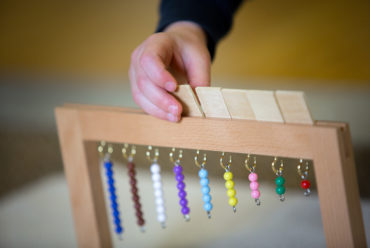Scissor Secrets that Make Cutting Easy
Borrowed with permission from Kidsplaysmarter.com
by Amy Smith
Learning how to cut is a big milestone for your child and cutting skills are expected to be mastered by elementary school. Yet learning how to properly hold and manipulate scissors can be a challenging time for many kids. Give your child a fine motor boost by teaching your child these Scissor Secrets that make Cutting Easy!
Tip #1: Mimic the fine motor movement of scissors with tongs.
The hand motion of opening and closing tongs is the same that is used with scissors, so build up your child’s hand strength by using tongs first. Create games with the tongs to keep your child’s interest and attention, such as placing ping pong ball (eggs) in egg cartons, or “cookies” on baking sheets.
Tip #2: Put a sticker on the thumb
Scissor success is largely dependent on hand positioning. Place a small sticker (or marker dot) on the knuckle of your child’s thumb and tell him to look at the sticker when cutting. The child can only see the sticker when his thumb is up, therefore providing a constant visual cue for proper hand positioning.
Tip #3: Put a sticker on the scissors
Place a long sticker or piece of colorful tape on the top of the scissor’s edge and tell the child to keep the colored part at the top when cutting. This will help the child to keep their scissors in the correct position and decrease the likelihood that the child will turn the scissors sideways and attempt to cut.
Tip #4: Hold onto a book
As mentioned above, positioning is key. Most cutting problems are due to poor wrist, hand, or arm positioning. Having your child hold onto a thin book or paper under his cutting arm will ensure proper arm positioning on the scissors because the elbow and forearm have to stay close to the body.
Tips #5: Start out with loop scissors
Loop scissors are a great tool because they automatically spring upwards and only require that the child squeeze down on the scissors (instead of squeezing down and then lifting up). These scissors decrease the act of cutting in half, making it much easier to cut. Once your child begins to feel success with this type of scissors, then introduce typical scissors.
Tip #6: Practice cutting different objects
Once your child gets the act of cutting down, have him practice cutting various objects such as play doh, dry noodles, bubble wrap, ribbons, cereal boxes, etc.. to sharpen scissor skills and lead to cutting more intricate shapes on the lines.











No Comments